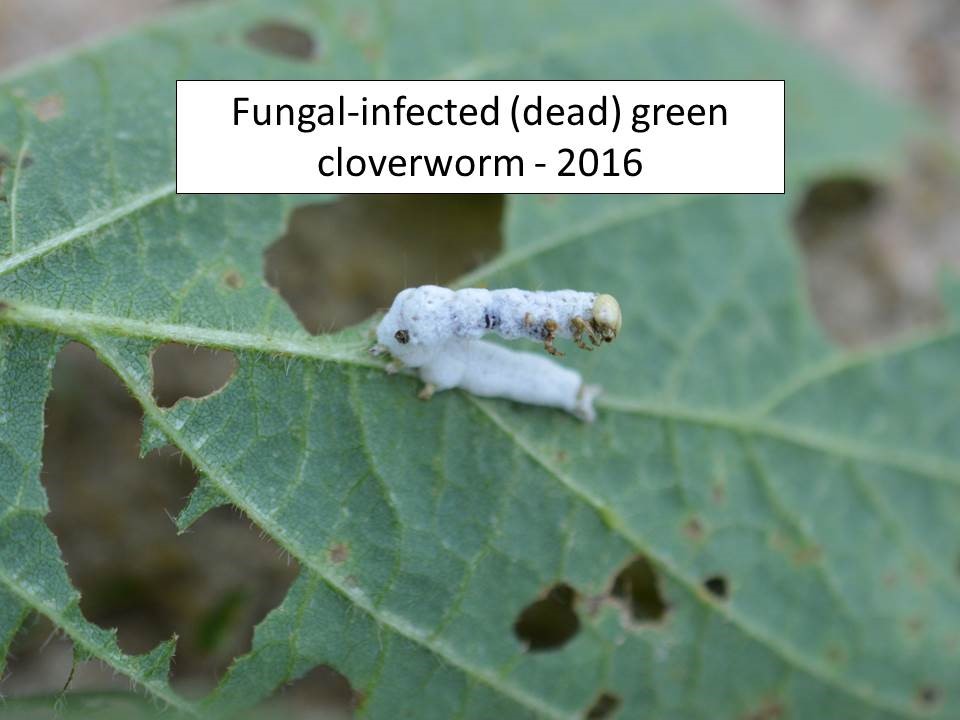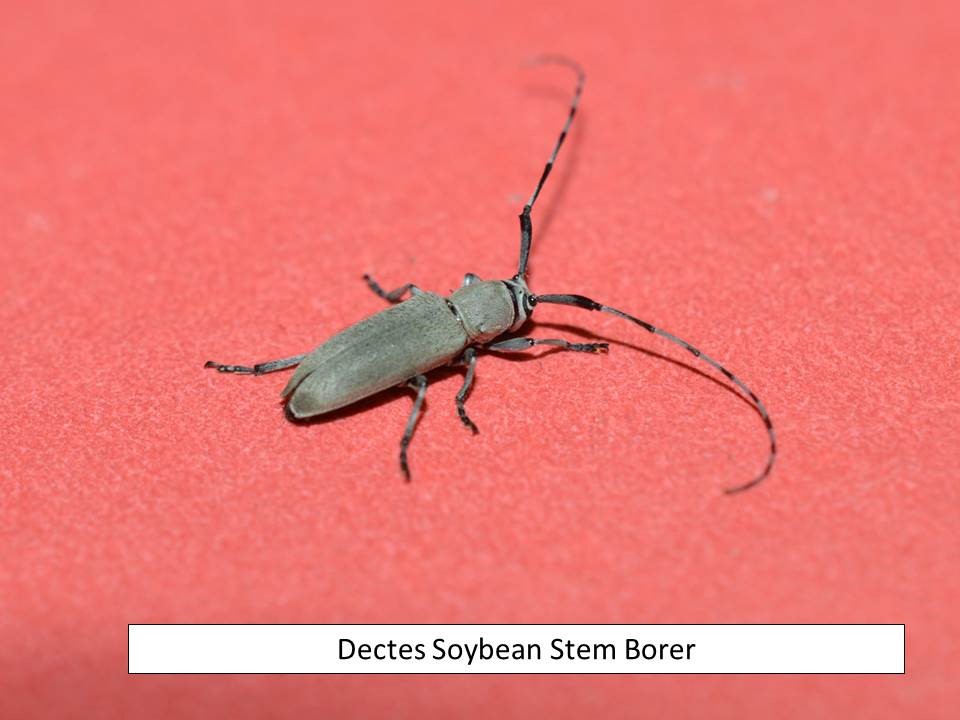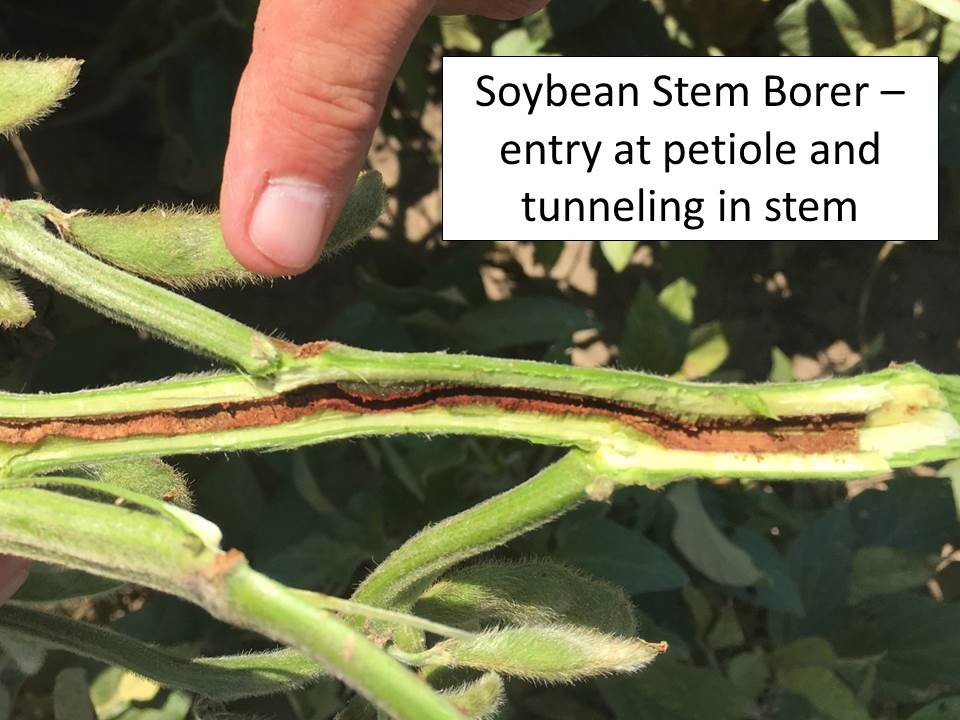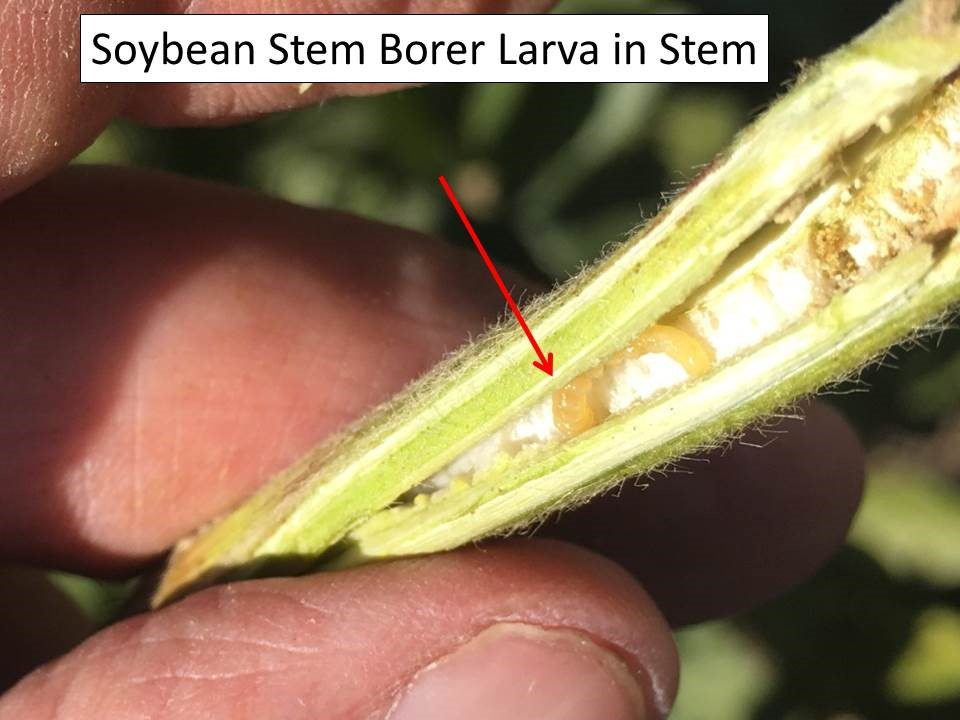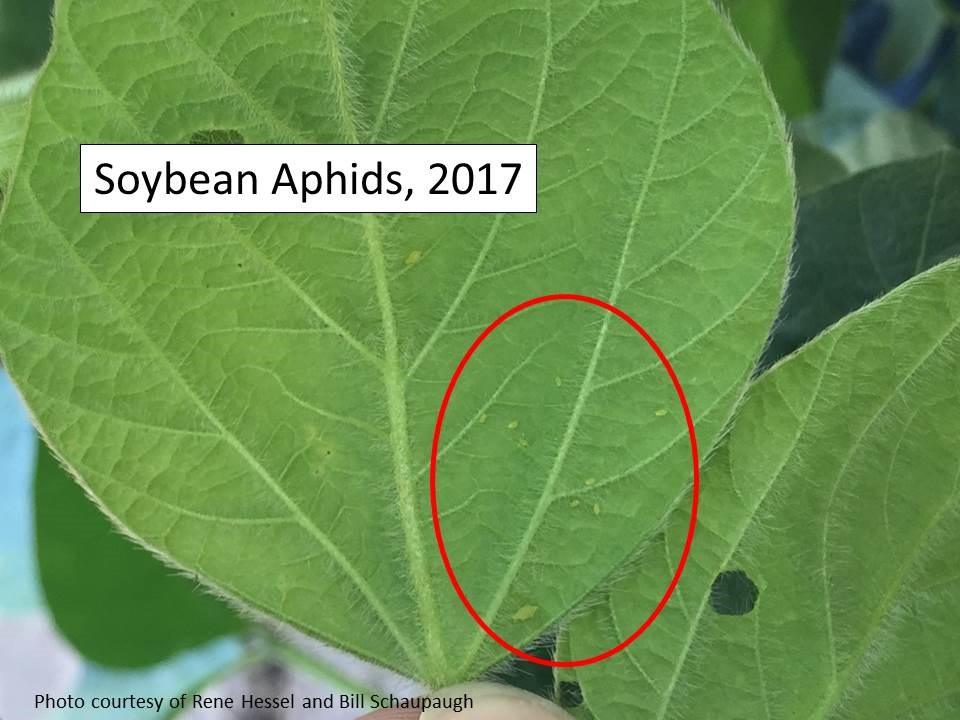–by Dr. Jeff Whitworth and Dr. Holly Schwarting
Thistle caterpillars have not all pupated or emerged as adults yet in north central Kansas. However, probably the majority of the larvae have finished leaf feeding and the adults have initiated oviposition. There are still large numbers of adult butterflies navigating throughout soybean and sunflower fields. Thus, scouting for the larvae should be an ongoing endeavor for probably another three weeks.
At the same time there are starting to be pretty good populations of green cloverworms in these same soybean fields. Fields in the early to mid-reproductive stages are less tolerant to defoliation. Populations last year caused considerable skeletonizing and resulted in many acres being treated. However, there were also numerous fields that had green cloverworms controlled by an entomophagous fungus.
This highly visible white fungus will probably attack the green cloverworms again this year and may even do so, so effectively that insecticide applications are not necessary. However, please keep in mind there is a lag time between a green cloverworm infestation of soybeans and larval infection by the fungus leading to their destruction. But, they usually slow down or stop feeding soon after becoming infected, even if not actually killed for a few days.
Soybean stem borers seem to be relatively numerous around north central Kansas as well. Oviposition by the females in the stem, at the site of the petiole attachment, is continuing. Many eggs have already hatched and larvae are tunneling downward in stems where they will internally girdle around the interior of the stem and end up in the base of the taproot where they overwinter.
Spider mites are still present in north central Kansas, but so far seem to be very spotty. These populations need to continue to be monitored during the plant’s reproductive stages.
Corn earworm larvae (soybean podworms) seem to just be getting started in south east Kansas and can cause considerable damage quickly by feeding on seeds within the pods.
Soybean aphids were first reported on 11 Aug, 2017, from the KSU Research Farm at Ashland Bottoms, just south of Manhattan, KS, by Rene Hessel and Bill Schaupaugh. These aphids have been found in the state every year since their first detection in 2002. Beneficial’s are usually very active around these aphid colonies and help keep them from flourishing. However, these small aphids need to be monitored periodically, especially in soybean fields treated for other pests, as these treatments may reduce the beneficial’s, and thus, any control which they may have provided.
For management of all these soybean pests, and others, please refer to the KSU Soybean Insect Management Guide: https://www.bookstore.ksre.ksu.edu/pubs/MF743.pdf



